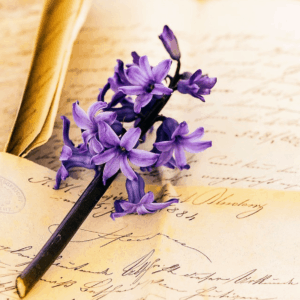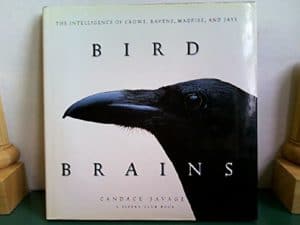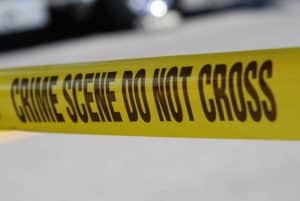I had just recently become a new Californian when Hawaii became the 50th of our United States in 1959. This remarkable event in American history was undoubtedly front page news on the west coast for months leading up to the official admission date of August 21. Alaska had become the 49th state just months before on January 3. At seven years of age, however, I was unaware of the magnitude of these historical moments.
Growing up in California as an student in elementary, middle and high school, my education was steeped in the history of California statehood and its proximity on the Pacific Ocean to western geography, Less than two decades following the end of World War II in 1945 (in both the European and Pacific conflicts), stories of the war west of California were richly described by middle-aged men who had returned from the bloody and watery battlefields. Germany surrendered on May 8, 1945 and Japan on September 1945, just seven years before I was born. It was the battle of Pearl Harbor that still seemed to be in everyone’s consciousness.
I was never fortunate as a child and young adult to visit Hawaii. My peers, whose families were in the military, or were affluent enough to take the 2,399 mile flight across the Pacific, returned with stories of lush greenery, tropical fruit, and daily rainfall. Cliches of the Polynesian Hawaii, complete with grass skirts, fruity drinks, and sumptuous luaus were my simplistic concepts of this exotic place which was as far from Northern California as was my birthplace in Central Massachusetts.
I was blessed this week to arrive in Honolulu for a planned vacation on two Hawaiian islands. Not only did I get to relax on Hawaiian beaches and soak in Hawaiian sunshine, but I visited several of Hawaii’s most precious historical sites in the capital city of Honolulu. One was the National Park Service’s visitor center at Pearl Harbor, including the sacred and emotional USS Arizona Memorial; the other was the Iolani Palace, home of the Hawaii’s last reigning monarchs, King Halakaua and his sister Queen Liliuokalani.
Hawaii is the only U.S. state that is an island, or rather an archipelago made up of hundreds of islands. Only seven of them are inhabited. The Hawaiian islands were formed by an undersea volcano that is still active on the Big Island, which bears the significant name of Hawaii Island and is the home of the town of Hilo and the volcanoes, Mauna Loa and Maura Kea. New islands are still forming from the activity of Maura Loa. The seven smaller, but still largest islands that make up the State of Hawaii, are Maui, Lanai, Molokai, Oahu, Kauai, Kahoolawe, and Niihau. The State of Hawaii is home to over 1.430M people. Honolulu, on the island of Oahu, is the capital of the state of Hawaii and largest city is home to less than a half million of them.
It is believed that the earliest settlers on the Hawaiian islands traveled from Polynesia, perhaps from another archipelago, the Marquesas Islands in the southern Pacific Ocean, a distance of 2,000 miles. They traversed the Pacific Ocean as early as 300 B.C.E. However, it wasn’t until the 1770s that Captain James Cook and other European explorers began to explore the Hawaiian islands. With those visitors came influences and disease that forever changed Hawaiian history.
Until the 1780s, Hawaiian chiefs fought and ruled, fought and ruled, until 1810 when one ruler united the islands into one. King Hamehameha-the-Great established a monarchy that governed until the death of his last heir in 1872. Over the next two decades, several elections, concessions of power, and manipulations of American military and economic interests, resulted in the annexation of Hawaii as a United States territory in 1898. (There are Hawaiians today who still do not recognize the annexation or statehood as a legal act.)
Of course, U.S. military bases and personnel were integral to peace in the Pacific during the first half of the 20th Century after the annexation. However, peace with Japan began to fall apart when Europe went to war against Hitler and the Axis powers. America refused to go to war and Japan recognized this unique vulnerability. Crucial to weakening the U.S. defense was the naval stronghold on the Hawaiian islands, specifically that of Pearl Harbor where the Pacific fleet was critically and strategically maintained.
Call it what you will, naïveté, stupidity, or technological ineptitude, the series of mistakes by U.S. forces on December 7, 1941 sealed a fate. The forces and civilians in Pearl Harbor were caught unaware in the early morning hours that Sunday when the Japanese struck with a precise and fortunate vengeance. Two bombardments of hundreds of Japanese fighter planes wiped out the entire fleet of American battleships at Pearl Harbor and hundreds of its air defense. War was declared by President Roosevelt the next day. It was only months later that Germany declared war and the U.S. was fully immersed in conflict both to the east and to the west.
Roosevelt’s strong and resolute words to Congress on December 8, 1941 are haunting to this day. The attack on Pearl Harbor was one that “will live in infamy,” he declared. Visiting the National Park Service’s Pearl Harbor museum in Honolulu, one can read the original draft of Roosevelt’s speech that he dictated to his secretary just a few hours after the Pearl Harbor attack. In edits, he scratched out the words “world history,” changing it to “infamy” — a shameful, outrageous act. In videos screened at the visitor’s center, one can hear the urgency and anger in Roosevelt’s voice.
Visiting Hawaii was a privilege. Beyond the blue surf, the fantastic views, and the lush landscape, I learned amazing things about my country and the State of Hawaii. I urge you to read more its history, including the heartbreak of Pearl Harbor.
The Morrill Memorial Library’s newest free streaming service, Kanopy, has hundreds of thoughtful documentaries, including Remember Pearl Harbor, an 81 minute documentary narrated by actor Tom Selleck. Our original streaming service, Hoopla!, includes dozens of e-books, audiobooks, movies and documentaries featuring the history of the attack on Pearl Harbor. In addition, Queen Liliuokalani, Hawaii’s last monarch, wrote her biography before Hawaii was annexed by the United States. This story of six decades of Hawaiian history can be read as a Hoopla! download.
Of course, the Minuteman Library Network catalog holds a plethora of books, movies, audiobooks and e-books about the attack on Pearl Harbor. Craig Nelson narrates the audio version of his 2016 book Pearl Harbor: From Infamy to Greatness. The definitive book on Pearl Harbor written by Gordon Prange and Donald Goldstein, published in 1982, is available in many versions in Minuteman libraries.
Charlotte Canelli is the library director of the Morrill Memorial Library in Norwood, Massachusetts. Read Charlotte’s column in the October 19, 2017 issue of the Norwood Transcript and Bulletin.



